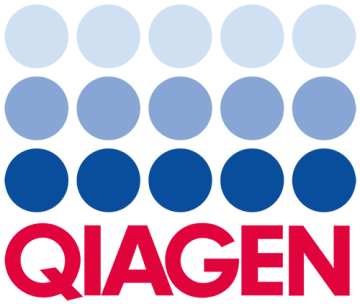Toll-like Receptor Signaling
Toll-like receptors (TLRs) belong to the family of pathogen-associated pattern recognition receptors. TLRs are transmembrane receptors and that bind to specific molecular patterns in bacteria and viruses. To date 10 such receptors have been identified in humans and their pathogen-associated ligands include bacterial flagellin, viral DNA, lipopolysaccharides and CpG DNA motifs. TLRs either singly or as heterodimers form a complex with different combinations of adapter molecules like MyD88, TRAF6 and TIRAP to initiate signal transduction upon ligand binding.Binding of ligand to TLR triggers a cascade of signaling events via the TLR-adapter complex...
Pathway Summary
Toll-like receptors (TLRs) belong to the family of pathogen-associated pattern recognition receptors. TLRs are transmembrane receptors and that bind to specific molecular patterns in bacteria and viruses. To date 10 such receptors have been identified in humans and their pathogen-associated ligands include bacterial flagellin, viral DNA, lipopolysaccharides and CpG DNA motifs. TLRs either singly or as heterodimers form a complex with different combinations of adapter molecules like MyD88, TRAF6 and TIRAP to initiate signal transduction upon ligand binding.Binding of ligand to TLR triggers a cascade of signaling events via the TLR-adapter complex. Downstream signaling molecules like p38MAPK, JNK and NF-κB are activated and translocated into the nucleus where they activate transcription regulators like c-Fos and c-Jun leading to the induction of several pro-inflammatory cytokines eventually leading to antibacterial and antiviral responses.
Toll-like Receptor Signaling Genes list
Explore Genes related to Toll-like Receptor Signaling
CD14CD14 molecule CHUKcomponent of inhibitor of nuclear factor kappa B kinase complex ECSITECSIT signaling integrator EIF2AK2eukaryotic translation initiation factor 2 alpha kinase 2 ELK1ETS transcription factor ELK1 FOSFos proto-oncogene, AP-1 transcription factor subunit IKBKBinhibitor of nuclear factor kappa B kinase subunit beta IKBKGinhibitor of nuclear factor kappa B kinase regulatory subunit gamma IL12Ainterleukin 12A IL12Binterleukin 12B IL18interleukin 18 IL1Ainterleukin 1 alpha IL1Binterleukin 1 beta IL1F10interleukin 1 family member 10 IL1RL1interleukin 1 receptor like 1 IL1RNinterleukin 1 receptor antagonist IL33interleukin 33 IL36Ainterleukin 36 alpha IL36Binterleukin 36 beta IL36Ginterleukin 36 gamma IL36RNinterleukin 36 receptor antagonist IL37interleukin 37 IRAK1interleukin 1 receptor associated kinase 1 IRAK2interleukin 1 receptor associated kinase 2 IRAK3interleukin 1 receptor associated kinase 3 IRAK4interleukin 1 receptor associated kinase 4 JUNJun proto-oncogene, AP-1 transcription factor subunit LBPlipopolysaccharide binding protein LY96lymphocyte antigen 96 MAP2K3mitogen-activated protein kinase kinase 3 MAP2K4mitogen-activated protein kinase kinase 4 MAP2K6mitogen-activated protein kinase kinase 6 MAP3K1mitogen-activated protein kinase kinase kinase 1 MAP3K14mitogen-activated protein kinase kinase kinase 14 MAP3K7mitogen-activated protein kinase kinase kinase 7 MAP4K4mitogen-activated protein kinase kinase kinase kinase 4 MAPK1mitogen-activated protein kinase 1 MAPK11mitogen-activated protein kinase 11 MAPK12mitogen-activated protein kinase 12 MAPK13mitogen-activated protein kinase 13 MAPK14mitogen-activated protein kinase 14 MAPK8mitogen-activated protein kinase 8 MYD88MYD88 innate immune signal transduction adaptor NFKB1nuclear factor kappa B subunit 1 NFKB2nuclear factor kappa B subunit 2 NFKBIANFKB inhibitor alpha PPARAperoxisome proliferator activated receptor alpha RELREL proto-oncogene, NF-kB subunit RELARELA proto-oncogene, NF-kB subunit RELBRELB proto-oncogene, NF-kB subunit RPS27Aribosomal protein S27a SIGIRRsingle Ig and TIR domain containing TAB1TGF-beta activated kinase 1 (MAP3K7) binding protein 1 TAB2TGF-beta activated kinase 1 (MAP3K7) binding protein 2 TICAM1toll like receptor adaptor molecule 1 TICAM2toll like receptor adaptor molecule 2 TIRAPTIR domain containing adaptor protein TLR1toll like receptor 1 TLR10toll like receptor 10 TLR2toll like receptor 2 TLR3toll like receptor 3 TLR4toll like receptor 4 TLR5toll like receptor 5 TLR6toll like receptor 6 TLR7toll like receptor 7 TLR8toll like receptor 8 TLR9toll like receptor 9 TNFtumor necrosis factor TNFAIP3TNF alpha induced protein 3 TOLLIPtoll interacting protein TRAF1TNF receptor associated factor 1 TRAF4TNF receptor associated factor 4 TRAF6TNF receptor associated factor 6 UBA52ubiquitin A-52 residue ribosomal protein fusion product 1 UBBubiquitin B UBCubiquitin C UBDubiquitin D
